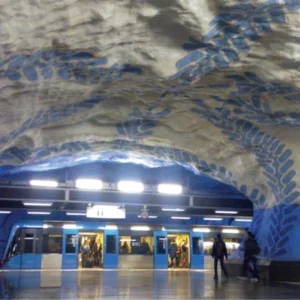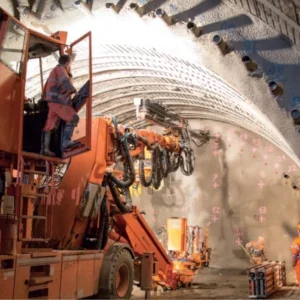Those are but the civil structures; there are, of course, the lighting and signage and occasional other M&E pieces if kit, in road tunnels, and also in metro stations, along with tracks. And, of course, fire safety systems.
Then, less traversed but open to owner operatives and occasionally other visitors, and the public, are more cavernous underground openings, such as for hydropower powerhouses, or in highly integrated infrastructure hubs – often in northern or cold zones, with prosperous economies – there can be shopping districts, sports halls, parking vaults.
Seldom for public sight but not unknown to such are the mazes of caverns that hold wastewater treatment tanks, serving cities.
Much, then, is always being built underground and their construction is made possible by a variety of methods and technologies. We put the spotlight on some supporting equipment, such as formworks, that help construction of final, cast insitu concrete linings.
For underground and more general construction, a large range of equipment will be on display soon at the Bauma. The globally significant exhibition will be held in Munich, in April, and we offer a preview.
Sharing information within the industry also supports the creation of long-term underground assets in their many forms, overcoming varied challenges. The season for such sharing, in major conferences, is approaching and we offer also spotlights upon a specialist event on fire safety in tunnels, in April, and also the premier industry event, the World Tunnel Congress, in May. Both are in northern Europe this year.
Before those, at the end of March will be North America’s big event for small diameter tunnelling – the No-Dig Show, in Colorado. It is in our spotlight on trenchless tunnelling.






